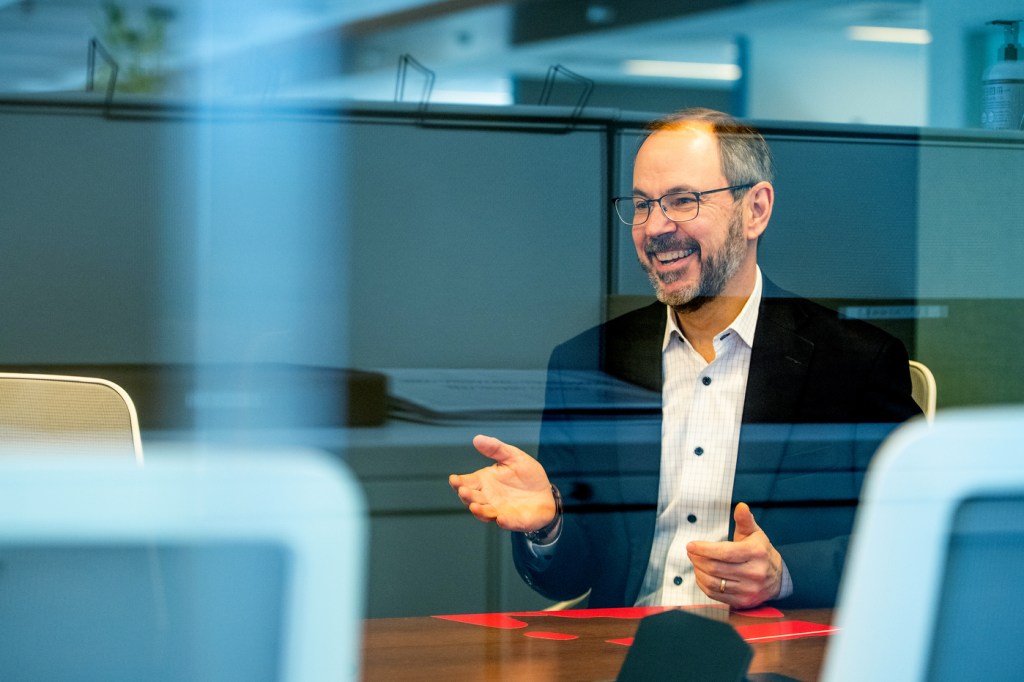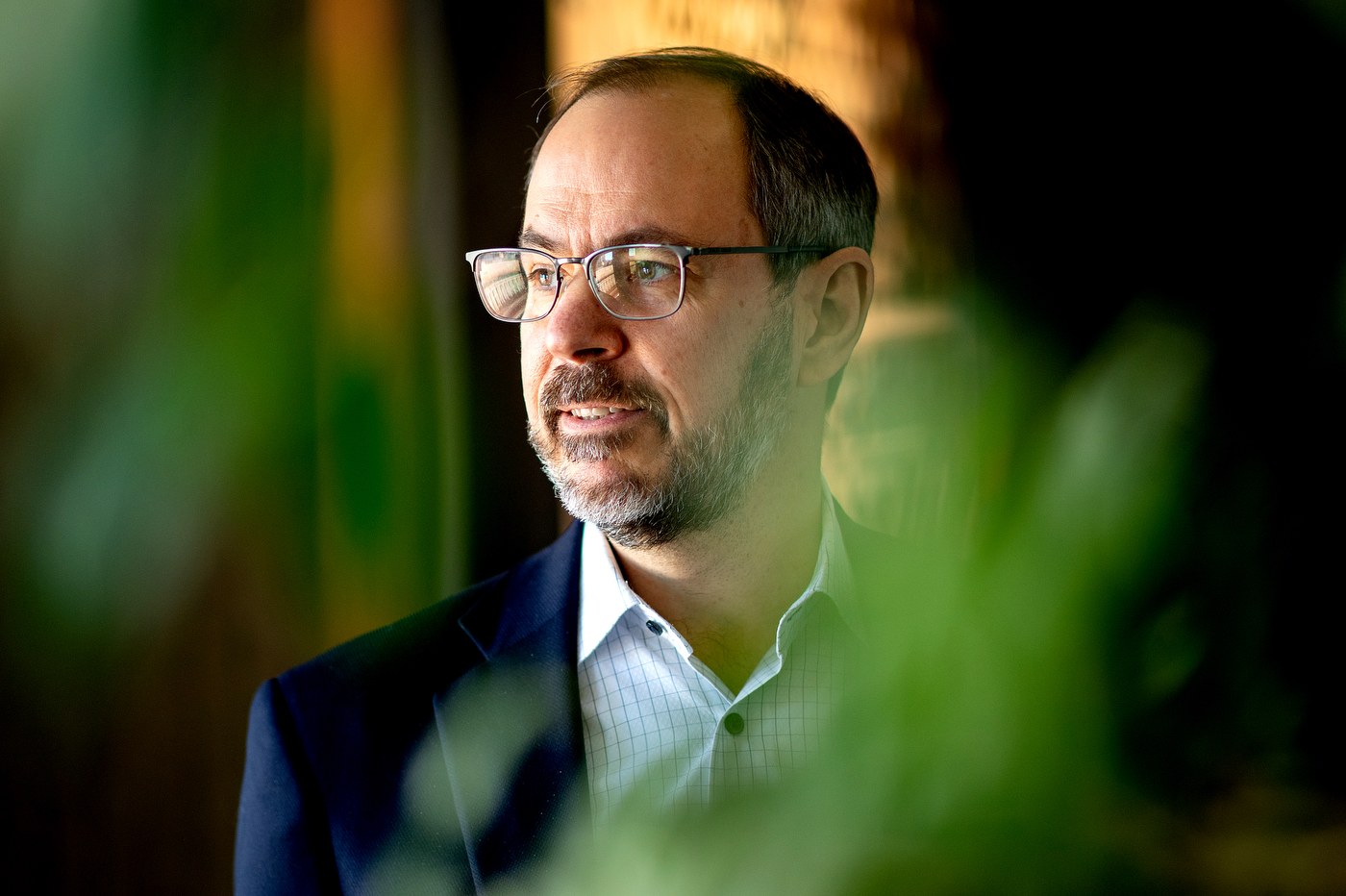The Northeastern University budget, explained

It’s been almost a year since Northeastern University—and indeed most of the world—shut down to mitigate the spread of COVID-19 and reimagine what daily life would look like in the midst of a pandemic. After building a state-of-the-art surveillance testing program, creating a new model for synchronous learning at home and on campus, and rallying together to #ProtectThePackNU and keep the community safe, the university successfully reopened and completed the fall semester.

Thomas Nedell, senior vice president for finance and treasurer. Photo by Matthew Modoono/Northeastern University
The spring semester is well underway with a seven-day positivity rate of 0.21 percent, making Northeastern one of the safest places to be in the region.
The extent to which institutions of higher education weathered the storm will matter greatly when it comes time to refocus and rebuild, and for Northeastern, the financial outlook is “very strong,” says Tom Nedell, the university’s senior vice president for finance and treasurer.
News@Northeastern sat down with Nedell to discuss Northeastern’s current budget, and projections for next year. Before getting into the details, some background:
The university’s operating budget for the 2020-21 fiscal year ending June 30 is about $1.5 billion. Most of the revenue (about 70 percent) comes from tuition and fees. Half of the spending is for salaries and benefits, with the rest going toward student health expenses, building maintenance and repair, food, and other expenses related to running a multi-campus, global university.
Let’s set the table a bit. How is Northeastern’s financial outlook overall?
Clearly the university, and everyone in our community—students, faculty, and staff—we’ve all had tremendous challenges this year. And the university has responded to those challenges in true Northeastern style. We’ve built a world-class testing facility, we leaned into enrollment opportunities to mitigate financial exposures, and we innovated by creating NUflex and literally reimagining how we run the university. It has really been incredible.
From my vantage point, as someone who is a steward of the financial resources, I want to make sure people understand that we came into this crisis in a very strong financial position. And the actions that we’ve taken have maintained that. So, even though we’ve had to endure real revenue hits, we have made adjustments and looked for other opportunities to mitigate financial risks. Other institutions may not be in that same position of strength. Some have had to take drastic action, including layoffs, suspending retirement plan contributions, and other cost-cutting measures. We have been able to avoid taking those difficult steps so far.
And moving forward?
We’re not being prudent about expenses just for survival as much as we are looking to raise resources that we can invest in the academic mission. And just like Northeastern did in 2009 and 2010—right around when I first started with the university—the economic crisis of the time created opportunities that the university seized upon, while others were retrenching.
We made a lot of faculty hires in particular at that time, and those hires allowed us to build real strength in a variety of fields.
That same ambitious sort of forward-leaning, optimistic view of the future is what we are carrying into, and hopefully through, the pandemic. We want to be ready to invest and ready to look for those opportunities for leadership. This includes leadership in fields such as experiential artificial intelligence and the Internet of Things, to name just a few.
We are also taking a very ambitious approach to university construction. Take, for example, the EXP building, which is moving full steam ahead. You can see the progress on that very tangibly; almost daily, we’re watching the changes from our windows on campus.
It is important to note that Moody’s Investors Service maintains a negative outlook for higher education as a whole. Northeastern, however, continues to receive an A1 rating from Moody’s, which is a testament to our financial strength.
How did COVID-19 affect the budget this year?
We are projecting a slight shortfall to the budget, but even that is remarkable in this environment. We started the year not knowing whether we’d have a positive bottom line at all. Unlike calendar years, which run from January to December, Northeastern’s fiscal years run from July to June. And as of now, it looks like we will be able to have a slightly positive bottom line [on June 30], but certainly nothing like we have had in previous years.
We have made investments in the teaching and research infrastructure to not only mitigate the impact of the pandemic, but to make long-term improvements to our campus.
In terms of revenue, we’re actually ahead of budget on the undergraduate side of things. We made some decisions last spring that allowed us to lean into the enrollment timeline, including introducing NUflex and NU Start, which reassured students and families that they could still get a true Northeastern experience.
However, that good news is offset by a projected shortfall of around $40 million in graduate and professional [tuition] revenue. A lot of those losses being international students, who just weren’t able to be with us because of global travel restrictions.
A third revenue component is the loss of room-and-board revenue. As students have decided to stay home and study remotely, we have experienced about a $45 million shortfall in room-and-board revenue. This is also due to the fact that our residence halls are only about 70 percent occupied for this academic year to maintain adherence to reduced density guidelines. Those losses represent a material impact on us. And so, you have to take all of those pluses and minuses into consideration.
On the expense side, we’ve certainly had increased expenses for all the COVID-19-related costs that we incurred—costs that we had never had before. In all, it adds up to about $111 million in projected expenses for testing, instructional technology, protection, and housing costs. There will be opportunities for some government funding to offset these expenses, but not nearly enough to cover the full investment.
Can you break down that $111 million figure a bit more?
The largest single cost is our testing operation, which includes the construction of the Life Sciences Testing Center and the Cabot and Huntington testing centers, as well as hiring staff and purchasing testing equipment. That’s about $50 million and it was money well spent to keep our community safe. We’ll spend about $31 million on new instructional technology related to NUflex and remote learning; $17 million on personal protective equipment; and $13 million to secure additional housing, such as the Westin Hotel.
Let’s look ahead to the 2021-22 fiscal year, starting July 1. Will budget cuts from this year, including hiring and wage freezes, continue for another year?
As we look forward to ’22, we’re currently in the budget planning cycle. In the next couple months, we’ll present a budget to the Board of Trustees. Of course, there’s still a lot of uncertainty out there, including distribution of vaccines, their efficacy against new COVID-19 variants, and the ability of international students to secure visas. There are still a lot of unknowns. But, there continues to be very strong demand for the signature Northeastern experience. We have record undergraduate application numbers—over 75,000—for this next enrollment cycle, so we have opportunities to be able to mitigate much of the uncertainty.
And again, our people have been the ones driving all of this success—whether it’s getting us closed and then reopened safely, whether it’s continuing operations remotely. Everyone has contributed to the extent they can. As of today, we’re hopeful that we can restore the annual merit increase program for the new fiscal year beginning on July 1. And that’s an optimistic indicator that we’re not facing long-term financial distress.
Speaking of the long term, the university is working on a new academic plan. How do we pay for it?
That’s an important question because we don’t like to just think about the budget on a year-to-year basis. Planning for the future means taking a longer view. After the provost—and the whole community—develop the academic plan, we will then draft an operational plan that is much more specific. That plan, which we sometimes call the long-range plan, will literally outline how many faculty members we need to hire, how many buildings we need to build, and all other investments needed to bring the plan to life. That operational plan is based on a five-year timeline, and we will essentially self-fund our ambitions by continuing to run the university efficiently. Operating margins we generate at the end of the fiscal year will be reinvested into the plan.
The bottom line is that, by working together and staying focused on our goals, we’ve done a good job weathering a very challenging year. But, looking ahead, Northeastern’s future is bright. We can afford to set our sights high and then make our dreams a reality.
For media inquiries, please contact media@northeastern.edu.





